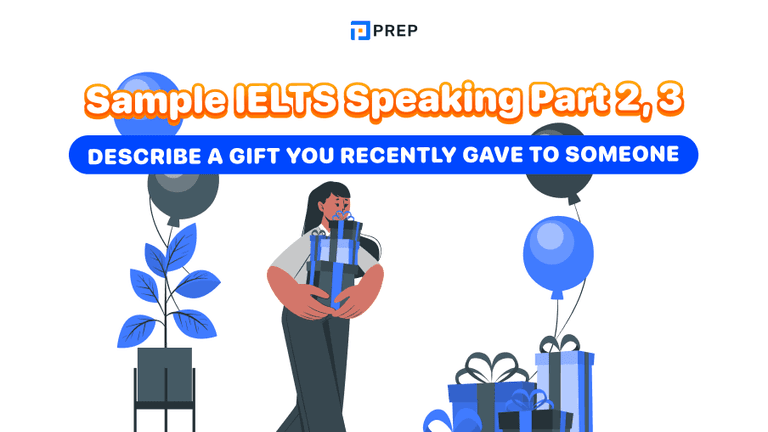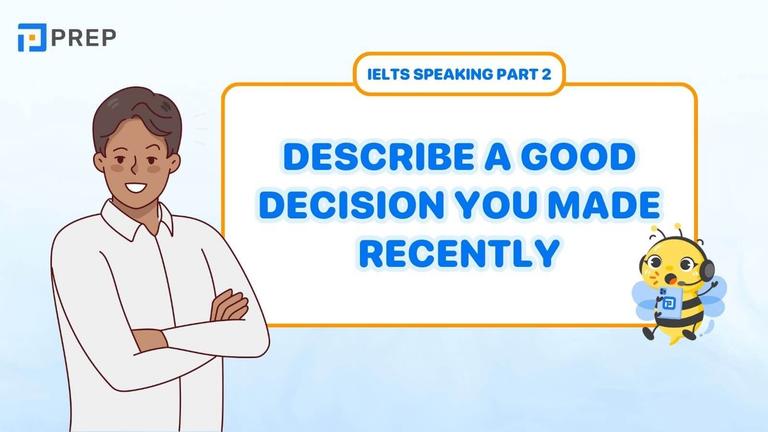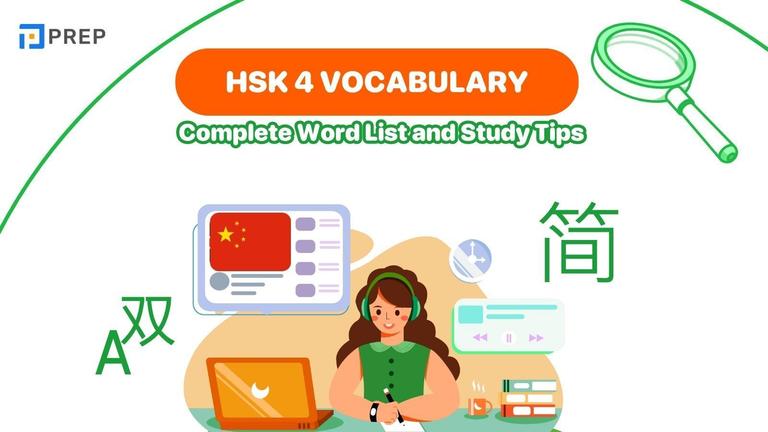Introducing Your Best Friend in English: Tips & Examples
“Introducing your best friend in English” is a common topic in both writing and speaking. This guide provides easy sentence patterns, sample paragraphs, and essential vocabulary to help you describe your best friend naturally and confidently in any situation.

I. Structure for Introducing Your Best Friend in Writing or Speaking
When introducing your best friend in English—either in writing or speaking—using a clear and easy-to-follow structure can help you express yourself more naturally and confidently. This basic 4-part structure is especially useful for English learners in everyday communication, exams, or presentations.
Introduction: Who is your best friend?
Begin with a few simple sentences to introduce the person:
- What is your best friend's name?
- How do you know each other?
- How long have you been friends?
Example: “My best friend’s name is Anna. We’ve known each other since high school, and she has always been like a sister to me.”
-
If you want to expand your self-introduction, check how to introduce family in English.
Physical Description (optional)
This part is optional but helpful, especially in writing. Describe your friend’s appearance using simple and respectful language:
-
Height, body type, hair, eyes, clothing style, etc.
Example: “She is tall and slim, with long black hair and a warm smile.”
-
Learn how to give polite compliments in English when describing people.
Personality, Interests, and Daily Life
In this section, talk about:
- Your friend’s personality traits (friendly, honest, hardworking)
- Common interests or hobbies (reading, playing soccer, painting)
- Habits or things you often do together
Example: “She is very creative and loves painting in her free time. On weekends, we often go to art galleries together.”
-
You can learn more expressions for describing hobbies in English to make your answers richer.
Why You Appreciate This Friendship / A Memorable Moment
Finish by sharing something more emotional or meaningful, such as:
- A short story or moment that shows why you value the friendship
- How your friend helped you or made you feel supported
Example: “Last year, when I was sick, she visited me every day and brought food. I will never forget her kindness.”
Recommended Tense: Present Simple and Past Simple
- Use present simple when describing personality, habits, and daily life.
- Use past simple when talking about past events or shared memories.
This structure not only helps organize your ideas but also builds confidence when writing or speaking in English. Keep it simple, personal, and sincere.
-
To speak more naturally, review tips on fluency and coherence in IELTS Speaking.

II. Useful Sentences and Vocabulary for Introducing Your Best Friend
To make your introduction smoother and more natural, it’s important to use sentences and vocabulary that are simple, accurate, and expressive. This section provides ready-to-use sentence patterns and grouped vocabulary to help you describe your best friend clearly and effectively.
Sentences to Start the Introduction
Use these phrases to begin your paragraph or speech:
- “My best friend’s name is [name].”
- “We’ve been friends since we were in [grade/year].”
- “I first met [him/her] when we were classmates at...”
- “It’s hard to describe how much this friend means to me, but I’ll try.”
Sentences to Describe Personality and Character
These expressions help you describe what your friend is like inside:
- “[He/She] is always kind and ready to help others.”
- “One thing I really admire about [him/her] is [his/her] honesty.”
- “Even when things get tough, [he/she] stays positive.”
- “Everyone loves [his/her] sense of humor and smile.”
Useful personality adjectives: Friendly, honest, careful, loyal, confident, sensitive, generous, reliable, shy, funny.
-
You can also explore conversation about family in English for more natural dialogue ideas.
Sentences to Talk About Hobbies and Daily Life
Add details about what your friend enjoys doing:
- “[He/She] enjoys playing the guitar and writing songs.”
- “In [his/her] free time, [he/she] usually watches documentaries or goes jogging.”
- “We often hang out on weekends to study or get coffee.”
- “We share a common interest in [e.g., photography / language learning / movies].”
Useful hobby-related vocabulary: Play (football, chess), go (swimming, shopping), enjoy (reading, cooking), be interested in, love, prefer.
-
Try reading conversation about hobbies in English to see these phrases in real context.
Sentences to End the Introduction or Paragraph
Wrap up your paragraph with a short conclusion about your friendship:
- “I feel lucky to have [him/her] as my best friend.”
- “Our friendship means a lot to me.”
- “I hope we will stay close for many years to come.”
- “To me, [name] is more than just a friend — [he/she] is family.”
III. Sample Paragraphs: Introducing Your Best Friend at Different Levels
To help you apply what you've learned, this section provides paragraph samples at different proficiency levels: beginner, intermediate, and advanced/formal. Each level demonstrates how you can talk about your best friend appropriately based on your current English ability or context, such as casual writing, school assignments, or formal speaking exams.
1. Beginner-Level Sample Paragraph
At the beginner level, it's best to use simple structures, common vocabulary, and short sentences. The focus is on clarity and accuracy, not complexity. These examples are ideal for students preparing for basic writing tasks or speaking practice at A1–A2 levels.
Sample 1:
My best friend is Lan. She is 14 years old. We are in the same class. Lan has long hair and a nice smile. She is very friendly and helps me with my homework. We like to play badminton together after school.
Sample 2:
His name is Duy. I met him in primary school. He is tall and thin. He has short black hair. Duy is kind and funny. He likes football and listening to music. I enjoy spending time with him.
Sample 3:
My best friend is Mai. She is always happy and smiles a lot. We often study and talk together. Mai loves reading books. She is a good friend because she listens to me when I feel sad.
Key Features:
- Use of present simple tense
- Basic sentence patterns (Subject + Verb + Object)
- Common vocabulary for describing people, hobbies, and personality
- Sentences mostly use 7–10 words for readability and fluency
These samples are short, easy to memorize, and ideal for classroom assignments or practice in beginner ESL courses. Students are encouraged to replace names or hobbies to personalize their version.
2. Intermediate-Level Sample Paragraph
At the intermediate level, learners are encouraged to use longer sentences, a mix of present and past tenses, and richer vocabulary. This level is suitable for school assignments, language exams, or general writing practice that requires both description and basic storytelling.
Sample 1:
My best friend is Minh, and we’ve been close since we met in grade 6. He is a tall boy with short hair and glasses, and he always wears a big smile. Minh is not only smart but also very friendly. He enjoys science and often helps me understand difficult homework. One time, before a biology test, he spent the whole afternoon explaining everything to me. Thanks to his support, I passed the test with a good score.
Sample 2:
I’ve been friends with Sarah for three years. She has a cheerful personality and always knows how to make others laugh. Sarah loves painting and spends most of her weekends working on new art projects. What I like most about her is that she listens carefully and gives helpful advice. Last year, when I moved to a new apartment, she came over to help me unpack and decorate. She turned a stressful day into a fun memory.
Sample 3:
David and I met during an English club meeting at school. He is quiet at first, but once you get to know him, he’s very kind and thoughtful. We share a love for books, especially mystery novels. Every month, we exchange our favorite titles and talk about them. This shared interest brought us closer and gave us many hours of good conversation.
Key Features:
- Use of complex sentence structures (cause–effect, relative clauses)
- Combination of present simple (for facts/habits) and past simple (for memories/stories)
- Use of transition words: “because”, “thanks to”, “what I like most is...”
- Vocabulary expansion: cheerful, thoughtful, supportive, decorate, stressful
These paragraphs are natural, coherent, and reflect real friendships. Students can model their writing based on these examples and personalize the details.
3. For IELTS or Formal Speaking Context
In formal settings—such as the IELTS Speaking test, classroom presentations, or academic writing—your introduction of a best friend should be logically organized, rich in vocabulary, and emotionally thoughtful. Below is a guide for structure, followed by three complete sample responses based on the IELTS Speaking Part 2 style, with increasing detail and lexical complexity.
Suggested Cue Card Format: Describe your best friend. You should say:
- Who he/she is
- How you met
- What he/she is like
- And explain why he/she is your best friend
Sample 1 — Standard Formal Response (Intermediate – Band 6.0–6.5)
I’d like to talk about my best friend, Thao. She and I first met when we sat next to each other in English class during our first year of high school. Since then, she has become someone I deeply trust and admire.
Thao is calm, focused, and genuinely caring. She’s always the first to notice when someone needs help. Last year, when I had to prepare for an important school presentation, I was really nervous. She helped me practice my speech every evening for a week, gave me useful feedback, and supported me the entire time.
What I appreciate most about Thao is her ability to stay positive no matter how stressful things become. She has taught me the value of patience, kindness, and quiet confidence. I feel lucky to call her my best friend.
Sample 2 — IELTS Speaking Style with Personal Storytelling (Upper-Intermediate – Band 6.5–7.0)
My best friend is Minh, whom I’ve known for over eight years. We became close when we worked together on a science project in secondary school, and since then, we've stayed in touch and supported each other’s goals.
Minh is outgoing and passionate about everything he does. He’s especially interested in technology and always tries to stay updated with new inventions. Despite his busy schedule, he still manages to make time for his friends.
One memory that stands out to me happened last year when I failed my first attempt at a scholarship interview. I was feeling really discouraged, but Minh not only encouraged me to try again, he also helped me practice and rebuild my confidence. Thanks to his support, I succeeded the second time. That’s what makes him such an incredible friend—his loyalty and belief in others.
Sample 3 — Academic/Essay-Style Description (Advanced – formal, for written use or high-level speaking)
I would like to introduce my best friend, Daniel, who has greatly influenced both my academic journey and personal growth. We first met at a weekend language course nearly ten years ago and quickly became close friends.
Daniel is known for his strong sense of responsibility, open-mindedness, and ability to think critically under pressure. He is currently studying mechanical engineering and often spends his free time working on sustainable energy models. Despite his demanding schedule, he remains deeply committed to staying connected with friends and supporting those around him.
What I admire most is his creativity and emotional intelligence. Whenever I face a problem, he knows how to ask the right questions and offer thoughtful advice without judgment. His presence has not only shaped the way I solve problems but also taught me how to be a more compassionate person. I consider myself very fortunate to have such a friend.
Key Features for IELTS and Formal Contexts:
- Structure and Coherence: Clear, logical flow using connectors (“What I admire most…”, “Despite…”, “One memory that stands out…”)
- Lexical Resource: Emotional and academic vocabulary (e.g. “critical thinking”, “emotional intelligence”, “commitment”, “compassionate”)
- Grammatical Range: Complex and compound sentences, mix of tenses where appropriate
- Personalization: Each response includes a real or realistic story for authenticity—an approach that scores well in speaking exams
These samples can be adapted for both spoken presentations and formal writing. Learners can practice by recording their own version, using these examples as models to improve fluency, coherence, and vocabulary usage.
IV. The Most Complete IELTS Prep Course
Thus, PREP has revealed vocabulary and detailed guides on introducing your best friend in English. If you are looking for a study plans with expert insights, tips and strategies that top scorers use to excel in the IELTS exam, check out Prep's course below:
-
IELTS course: Score Big in IELTS With Our Expert Tips!

Hi I'm Chloe, and I am currently serving as an Product Content Administrator at Prep Education. With over five years of experience in independent online IELTS study and exam preparation, I am confident in my ability to support learners in achieving their highest possible scores.
Comment
Premium content
View allPersonalized roadmap
Most read












